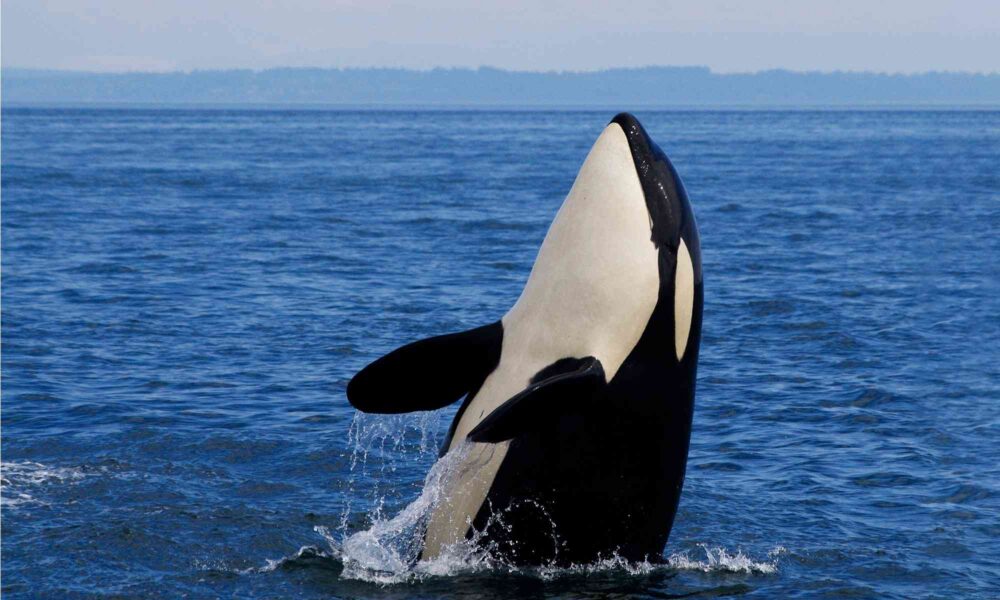If you’re thinking of going killer whale watching this summer, you might have a harder time than usual catching a glimpse of those famous black-and-white tail flips.
Climate change is driving killer whales north, further into the Arctic Circle, triggering a cascade of disturbances within the Arctic marine ecosystem. Scientists, such as Melissa McKinney, an assistant professor in McGill’s Department of Natural Resources, are investigating how whale migrations have and will disrupt food webs in the Arctic. Anaïs Remili, a PhD student in McKinney’s lab, is leading a project to reconstruct killer whales’ diets and to understand how food webs are changing now that the whales are moving into unprecedented territory.
Unlike many Arctic marine mammals, killer whales are restricted by the presence of ice sheets—their dorsal fins hit the sea ice as they move through the water, preventing them from crossing into the Arctic icescape. But as the Earth’s atmosphere has warmed and the ice sheets have begun to melt, more space in the Arctic has become available to whales. As they migrate northwards, into the territory of narwhals, belugas and seals, killer whales expand their diets, feasting upon these larger prey items with greater nutritional value, ultimately disrupting a food web that researchers know little about.
“As the Arctic is changing so rapidly, we don’t know yet if the killer whales are having a huge impact or a moderate impact […] on the food web’s dynamics,” Remili said in an interview with The McGill Tribune. “We know from past experience that killer whales have […] some trophic cascade effects on different food webs […] and that can have huge impacts down the line.”
Remili explained that there is some concern within the scientific community that this increase in predatory activity will shrink narwhal, beluga and seal populations, which could provoke further ecological disruptions.
Reconstructing a killer whale’s diet is no simple task. Orcas are already difficult to track because they swim to parts of the ocean that are hard for humans to access, which also makes recording prey ingestion via observation nearly impossible. Remili has overcome this challenge by using a technique called Quantitative Fatty Acid Signature Analysis (QFASA) to understand the diets of killer whales.
“We cannot get a long-term feeding assessment, so what we do is go to the Arctic and collect samples [by] shooting a little dart with a modified tip […] to take a biopsy,” said Remili. “We can then look at the blubber […] and look at the fatty acid composition.”
A whale’s blubber consists mostly of fatty acids, the building blocks of fat. One specific class, called dietary fatty acids, is acquired from ingesting prey and it accumulates in the predator’s fatty stores. A closer inspection of these fatty stores can reveal the exact kinds of prey that a whale has consumed. Remili used QFASA to measure the different proportions of dietary fatty acids within the biopsy sample to figure out which prey were eaten by the whales.
“The problem is there is [a] little modification that happens from the prey to the predator and that’s because the predator will metabolize some of these fatty acids,” Remili explained. “That’s the piece of the puzzle that we have been missing for such a long time.”
Remili was able to identify the fatty acid modification between prey and predator by using captive killer whales from SeaWorld as models, who have been fed the same diet for their entire lives. Once the scientists could distinguish between the fatty acids from prey and those from the killer whales, it was possible to use QFASA to model the diets of 200 wild killer whales of the North Atlantic.
This breakthrough is a significant step in advancing research on killer whales as they are notoriously difficult to study due to their inaccessibility. In the future, Remili is hoping to use her research to determine how anthropogenic threats, such as contaminants like pesticides and flame retardants, affect the livelihoods of these enigmatic marine mammals.









